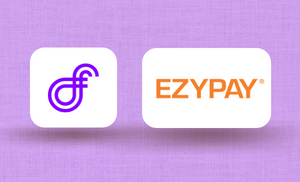We’ve loved partnering with you because you’ve come with us on the journey, as we’ve grown, so have you.
Andrew So, CIO
BACKGROUND
Ezypay is Australia’s leading solution for subscription and direct debit billing. The company offers a cloud-based subscription payment platform to manage recurring direct debit payments across multiple sites, multiple payment methods, and multiple currencies to businesses and their customers across the Asia Pacific region.
Ezypay has been a client of service provider ASE for over eight years. During that time ASE has delivered colocation, connectivity, and unified communications services.
After a technology analysis of their business, ASE originally relocated Ezypay into an Equinix colocation facility, out of their offices in Chatswood, NSW, Australia. To take advantage of the better availability and uptime of services, ASE shifted Ezypay infrastructure and workloads, which also came with a host of other advantages from a connectivity and security perspective, as well as access to cloud services.
THE CHALLENGE
Ezypay’s business evolved to make more use of cloud services, particularly on Amazon Web Services (AWS). A requirement remained to continue existing colocated infrastructure, due to several compliance and operational reasons. It was critical to keep data close, out of the clouds, or available between multiple clouds.
The infrastructure that Ezypay had colocated comprised of VMware, an IBM SAN, and IBM Lenovo servers and continued for several years. Eventually, that came to an end of life where they had to migrate in some way, shape, or form.
Without a need for a full refresh, or to redeploy a VMware environment and traditional legacy SAN and server application environment, Fluid came into the picture as a solution.
THE SOLUTION
Ezypay looked to Fluid to transition to a more agile and modern architecture.
Fluid provided the capability to not only deploy new containerised services, which their developers and other teams can create simply and quickly using infrastructure as code practices but also for Ezypay to migrate and run their legacy VMware environment as containers inside of Fluid.
Ezypay received the best of both worlds, to have the forward-looking approach of being able to deploy new containerised services into the environment, but also to support the legacy environment as well. They maximised their investment for hardware, general maintenance, and other overheads that come with maintaining an environment.
Fluid’s integration with NetApp Cloud Manager and Trident (the CSI storage container storage interface for Kubernetes that is also deployed out of the box automatically when you deploy Fluid) provided visibility and control of all compute, network, and data storage elements that make up the solution. The ability to manage data as a discrete and highly prized asset by utilising NetApp technology such as Snapshot and data replication improved resiliency and peace of mind. Not only does Ezypay use Fluid, but they also use NetApp Private Storage (NPS) as a service offering from ASE.
OUTCOME
Ezypay has moved from an environment where they were using legacy infrastructure, with legacy backups and data management, through to implementing Fluid to be agile with how they go forward with their product enhancements and general technology operations as well.
Implementing Fluid has resulted in Ezypay being able to place more focus on their application and therefore their users, as opposed to maintaining legacy infrastructure. They had already started to see the benefits of doing that when they moved from their office out to Equinix, at the recommendation of ASE.
Next, ASE will retire their co-location. Ezypay has now consolidated an entire cabinet full of equipment down to about 2RUs of rack space, thanks to the solution Fluid has enabled.
By making data more open and accessible whilst maintaining protection and privacy, Ezypay will be able to accelerate its product development across any cloud and in any region where it operates.
The ability to manage the Fluid environment from within Cloud Manager has also resulted in exposure to other NetApp services such as Snapshot Control, as well as a range of other services, like Cloud Insights, that they can easily utilise from the same portal.


